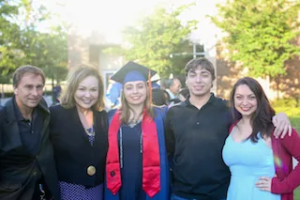Vic Zanetti’s Story: A Glioblastoma Survivor & Proud Katten Muchin Employee
“I decided I was going to be like Magic Johnson…He didn’t give up.”
CSCNT is proud to spotlight Katten Muchin for their ongoing support of our Red Tie Gala, as well as KM employee and glioblastoma survivor Vic Zanetti.
As an Encouragement Sponsor of the 2023 Red Tie Gala, Katten Muchin is proud to support Cancer Support Community North Texas and the thousands of cancer patients who benefit from their mental health and social care.
Diagnosed with glioblastoma in 2007, Vic Zanetti was given about 15 months to live. As a lifelong athlete, he simply thought he’d had a series of headaches over the months before. Then, when picking up his wife’s birthday cake, he noticed a few fingers on his left hand were numb. He had a CT scan which showed a growth in the right frontal lobe of his brain.

The hospital he was at didn’t have a neurologist on staff, so they recommended he go to Zale Lipshy Pavilion at UT Southwestern. Ironically, Vic had represented the Pavilion as an attorney since its formation in the early 1980s, so he was familiar with the “brilliance of its neurosurgery department.”
At UT Southwestern, he was diagnosed with glioblastoma – a egg-sized shock to his system. Dr. Bruce Mickey helped him “keep his emotions in check” and conducted a five-hour surgery. The results revealed a Grade 4 glioblastoma multiforme, the most aggressive form of this type of tumor.
In Vic’s words: “I was depressed after the initial diagnosis. I thought: ‘Why bother?’ Then it became mind over matter. I decided I was going to be like Magic Johnson. HIV was a death sentence, but he didn’t give up. Medical advancements allowed him to keep playing and living his life. So, I thought, ‘I’m going to get on the treadmill and outrun this disease long enough for modern medicine to catch up.’”
His oncologist, Dr. Elizabeth Maher, prescribed six weeks of radiation and a year of chemotherapy. Eventually he reached the 15-month mark after diagnosis, then 18 months, then two years, then three. Each imaging session showed the tumor wasn’t growing.
The tipping point was when Dr. Maher asked him to come in for a research MRI – they had discovered a breakthrough for patients who have a certain gene abnormality, isocitrate dehydrogenase (IDH), in their tumor. They survived longer. “It was my Magic Johnson miracle. I’ve just got to keep running.”
Now, Vic only goes in for check-ups every four months. “I’ve changed since then. I stopped missing soccer games and dance recitals. I still love my job, but my work-life balance has improved…If you find yourself facing a situation like mine, don’t give up. Go about your life like it’s not going to end too soon, because hopefully it won’t.”
